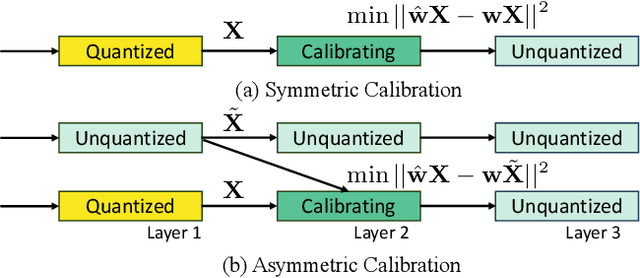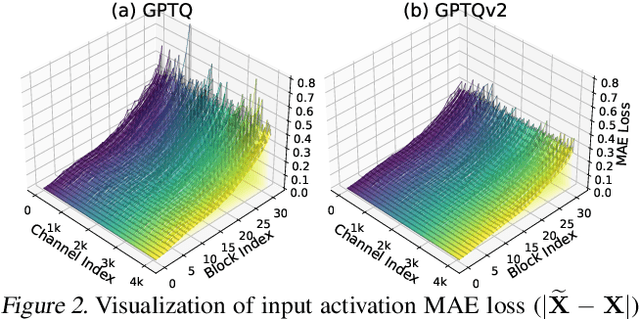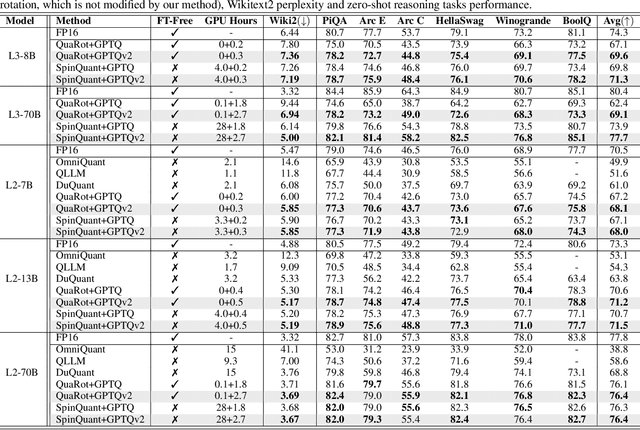Yuhang Li
GLM-4.5: Agentic, Reasoning, and Coding (ARC) Foundation Models
Aug 08, 2025Abstract:We present GLM-4.5, an open-source Mixture-of-Experts (MoE) large language model with 355B total parameters and 32B activated parameters, featuring a hybrid reasoning method that supports both thinking and direct response modes. Through multi-stage training on 23T tokens and comprehensive post-training with expert model iteration and reinforcement learning, GLM-4.5 achieves strong performance across agentic, reasoning, and coding (ARC) tasks, scoring 70.1% on TAU-Bench, 91.0% on AIME 24, and 64.2% on SWE-bench Verified. With much fewer parameters than several competitors, GLM-4.5 ranks 3rd overall among all evaluated models and 2nd on agentic benchmarks. We release both GLM-4.5 (355B parameters) and a compact version, GLM-4.5-Air (106B parameters), to advance research in reasoning and agentic AI systems. Code, models, and more information are available at https://github.com/zai-org/GLM-4.5.
GAME: Learning Multimodal Interactions via Graph Structures for Personality Trait Estimation
May 05, 2025Abstract:Apparent personality analysis from short videos poses significant chal-lenges due to the complex interplay of visual, auditory, and textual cues. In this paper, we propose GAME, a Graph-Augmented Multimodal Encoder designed to robustly model and fuse multi-source features for automatic personality prediction. For the visual stream, we construct a facial graph and introduce a dual-branch Geo Two-Stream Network, which combines Graph Convolutional Networks (GCNs) and Convolutional Neural Net-works (CNNs) with attention mechanisms to capture both structural and appearance-based facial cues. Complementing this, global context and iden-tity features are extracted using pretrained ResNet18 and VGGFace back-bones. To capture temporal dynamics, frame-level features are processed by a BiGRU enhanced with temporal attention modules. Meanwhile, audio representations are derived from the VGGish network, and linguistic se-mantics are captured via the XLM-Roberta transformer. To achieve effective multimodal integration, we propose a Channel Attention-based Fusion module, followed by a Multi-Layer Perceptron (MLP) regression head for predicting personality traits. Extensive experiments show that GAME con-sistently outperforms existing methods across multiple benchmarks, vali-dating its effectiveness and generalizability.
GPTQv2: Efficient Finetuning-Free Quantization for Asymmetric Calibration
Apr 03, 2025



Abstract:We introduce GPTQv2, a novel finetuning-free quantization method for compressing large-scale transformer architectures. Unlike the previous GPTQ method, which independently calibrates each layer, we always match the quantized layer's output to the exact output in the full-precision model, resulting in a scheme that we call asymmetric calibration. Such a scheme can effectively reduce the quantization error accumulated in previous layers. We analyze this problem using optimal brain compression to derive a close-formed solution. The new solution explicitly minimizes the quantization error as well as the accumulated asymmetry error. Furthermore, we utilize various techniques to parallelize the solution calculation, including channel parallelization, neuron decomposition, and Cholesky reformulation for matrix fusion. As a result, GPTQv2 is easy to implement, simply using 20 more lines of code than GPTQ but improving its performance under low-bit quantization. Remarkably, on a single GPU, we quantize a 405B language transformer as well as EVA-02 the rank first vision transformer that achieves 90% pretraining Imagenet accuracy. Code is available at github.com/Intelligent-Computing-Lab-Yale/GPTQv2.
Snapshot multi-spectral imaging through defocusing and a Fourier imager network
Jan 24, 2025



Abstract:Multi-spectral imaging, which simultaneously captures the spatial and spectral information of a scene, is widely used across diverse fields, including remote sensing, biomedical imaging, and agricultural monitoring. Here, we introduce a snapshot multi-spectral imaging approach employing a standard monochrome image sensor with no additional spectral filters or customized components. Our system leverages the inherent chromatic aberration of wavelength-dependent defocusing as a natural source of physical encoding of multi-spectral information; this encoded image information is rapidly decoded via a deep learning-based multi-spectral Fourier Imager Network (mFIN). We experimentally tested our method with six illumination bands and demonstrated an overall accuracy of 92.98% for predicting the illumination channels at the input and achieved a robust multi-spectral image reconstruction on various test objects. This deep learning-powered framework achieves high-quality multi-spectral image reconstruction using snapshot image acquisition with a monochrome image sensor and could be useful for applications in biomedicine, industrial quality control, and agriculture, among others.
ITPNet: Towards Instantaneous Trajectory Prediction for Autonomous Driving
Dec 10, 2024



Abstract:Trajectory prediction of agents is crucial for the safety of autonomous vehicles, whereas previous approaches usually rely on sufficiently long-observed trajectory to predict the future trajectory of the agents. However, in real-world scenarios, it is not realistic to collect adequate observed locations for moving agents, leading to the collapse of most prediction models. For instance, when a moving car suddenly appears and is very close to an autonomous vehicle because of the obstruction, it is quite necessary for the autonomous vehicle to quickly and accurately predict the future trajectories of the car with limited observed trajectory locations. In light of this, we focus on investigating the task of instantaneous trajectory prediction, i.e., two observed locations are available during inference. To this end, we propose a general and plug-and-play instantaneous trajectory prediction approach, called ITPNet. Specifically, we propose a backward forecasting mechanism to reversely predict the latent feature representations of unobserved historical trajectories of the agent based on its two observed locations and then leverage them as complementary information for future trajectory prediction. Meanwhile, due to the inevitable existence of noise and redundancy in the predicted latent feature representations, we further devise a Noise Redundancy Reduction Former, aiming at to filter out noise and redundancy from unobserved trajectories and integrate the filtered features and observed features into a compact query for future trajectory predictions. In essence, ITPNet can be naturally compatible with existing trajectory prediction models, enabling them to gracefully handle the case of instantaneous trajectory prediction. Extensive experiments on the Argoverse and nuScenes datasets demonstrate ITPNet outperforms the baselines, and its efficacy with different trajectory prediction models.
PCoTTA: Continual Test-Time Adaptation for Multi-Task Point Cloud Understanding
Nov 01, 2024



Abstract:In this paper, we present PCoTTA, an innovative, pioneering framework for Continual Test-Time Adaptation (CoTTA) in multi-task point cloud understanding, enhancing the model's transferability towards the continually changing target domain. We introduce a multi-task setting for PCoTTA, which is practical and realistic, handling multiple tasks within one unified model during the continual adaptation. Our PCoTTA involves three key components: automatic prototype mixture (APM), Gaussian Splatted feature shifting (GSFS), and contrastive prototype repulsion (CPR). Firstly, APM is designed to automatically mix the source prototypes with the learnable prototypes with a similarity balancing factor, avoiding catastrophic forgetting. Then, GSFS dynamically shifts the testing sample toward the source domain, mitigating error accumulation in an online manner. In addition, CPR is proposed to pull the nearest learnable prototype close to the testing feature and push it away from other prototypes, making each prototype distinguishable during the adaptation. Experimental comparisons lead to a new benchmark, demonstrating PCoTTA's superiority in boosting the model's transferability towards the continually changing target domain.
SVIP: Towards Verifiable Inference of Open-source Large Language Models
Oct 29, 2024Abstract:Open-source Large Language Models (LLMs) have recently demonstrated remarkable capabilities in natural language understanding and generation, leading to widespread adoption across various domains. However, their increasing model sizes render local deployment impractical for individual users, pushing many to rely on computing service providers for inference through a blackbox API. This reliance introduces a new risk: a computing provider may stealthily substitute the requested LLM with a smaller, less capable model without consent from users, thereby delivering inferior outputs while benefiting from cost savings. In this paper, we formalize the problem of verifiable inference for LLMs. Existing verifiable computing solutions based on cryptographic or game-theoretic techniques are either computationally uneconomical or rest on strong assumptions. We introduce SVIP, a secret-based verifiable LLM inference protocol that leverages intermediate outputs from LLM as unique model identifiers. By training a proxy task on these outputs and requiring the computing provider to return both the generated text and the processed intermediate outputs, users can reliably verify whether the computing provider is acting honestly. In addition, the integration of a secret mechanism further enhances the security of our protocol. We thoroughly analyze our protocol under multiple strong and adaptive adversarial scenarios. Our extensive experiments demonstrate that SVIP is accurate, generalizable, computationally efficient, and resistant to various attacks. Notably, SVIP achieves false negative rates below 5% and false positive rates below 3%, while requiring less than 0.01 seconds per query for verification.
GiVE: Guiding Visual Encoder to Perceive Overlooked Information
Oct 26, 2024Abstract:Multimodal Large Language Models have advanced AI in applications like text-to-video generation and visual question answering. These models rely on visual encoders to convert non-text data into vectors, but current encoders either lack semantic alignment or overlook non-salient objects. We propose the Guiding Visual Encoder to Perceive Overlooked Information (GiVE) approach. GiVE enhances visual representation with an Attention-Guided Adapter (AG-Adapter) module and an Object-focused Visual Semantic Learning module. These incorporate three novel loss terms: Object-focused Image-Text Contrast (OITC) loss, Object-focused Image-Image Contrast (OIIC) loss, and Object-focused Image Discrimination (OID) loss, improving object consideration, retrieval accuracy, and comprehensiveness. Our contributions include dynamic visual focus adjustment, novel loss functions to enhance object retrieval, and the Multi-Object Instruction (MOInst) dataset. Experiments show our approach achieves state-of-the-art performance.
TesseraQ: Ultra Low-Bit LLM Post-Training Quantization with Block Reconstruction
Oct 24, 2024



Abstract:Large language models (LLMs) have revolutionized natural language processing, albeit at the cost of immense memory and computation requirements. Post-training quantization (PTQ) is becoming the de facto method to reduce the memory footprint and improve the inference throughput of LLMs. In this work, we aim to push the upper limit of LLM PTQ by optimizing the weight rounding parameters with the block reconstruction technique, a predominant method in previous vision models. We propose TesseraQ, a new state-of-the-art PTQ technique, to quantize the weights of LLMs to ultra-low bits. To effectively optimize the rounding in LLMs and stabilize the reconstruction process, we introduce progressive adaptive rounding. This approach iteratively transits the soft rounding variables to hard variables during the reconstruction process. Additionally, we optimize the dequantization scale parameters to fully leverage the block reconstruction technique. We demonstrate that TesseraQ can be seamlessly integrated with existing scaling or clipping-based PTQ algorithms such as AWQ and OmniQuant, significantly enhancing their performance and establishing a new state-of-the-art. For instance, when compared to AWQ, TesseraQ improves the wikitext2 perplexity from 14.65 to 6.82 and average downstream accuracy from 50.52 to 59.27 with 2-bit weight-only quantization of LLaMA-2-7B. Across a range of quantization schemes, including W2A16, W3A16, W3A3, and W4A4, TesseraQ consistently exhibits superior performance.
Optical Generative Models
Oct 23, 2024



Abstract:Generative models cover various application areas, including image, video and music synthesis, natural language processing, and molecular design, among many others. As digital generative models become larger, scalable inference in a fast and energy-efficient manner becomes a challenge. Here, we present optical generative models inspired by diffusion models, where a shallow and fast digital encoder first maps random noise into phase patterns that serve as optical generative seeds for a desired data distribution; a jointly-trained free-space-based reconfigurable decoder all-optically processes these generative seeds to create novel images (never seen before) following the target data distribution. Except for the illumination power and the random seed generation through a shallow encoder, these optical generative models do not consume computing power during the synthesis of novel images. We report the optical generation of monochrome and multi-color novel images of handwritten digits, fashion products, butterflies, and human faces, following the data distributions of MNIST, Fashion MNIST, Butterflies-100, and Celeb-A datasets, respectively, achieving an overall performance comparable to digital neural network-based generative models. To experimentally demonstrate optical generative models, we used visible light to generate, in a snapshot, novel images of handwritten digits and fashion products. These optical generative models might pave the way for energy-efficient, scalable and rapid inference tasks, further exploiting the potentials of optics and photonics for artificial intelligence-generated content.
 Add to Chrome
Add to Chrome Add to Firefox
Add to Firefox Add to Edge
Add to Edge